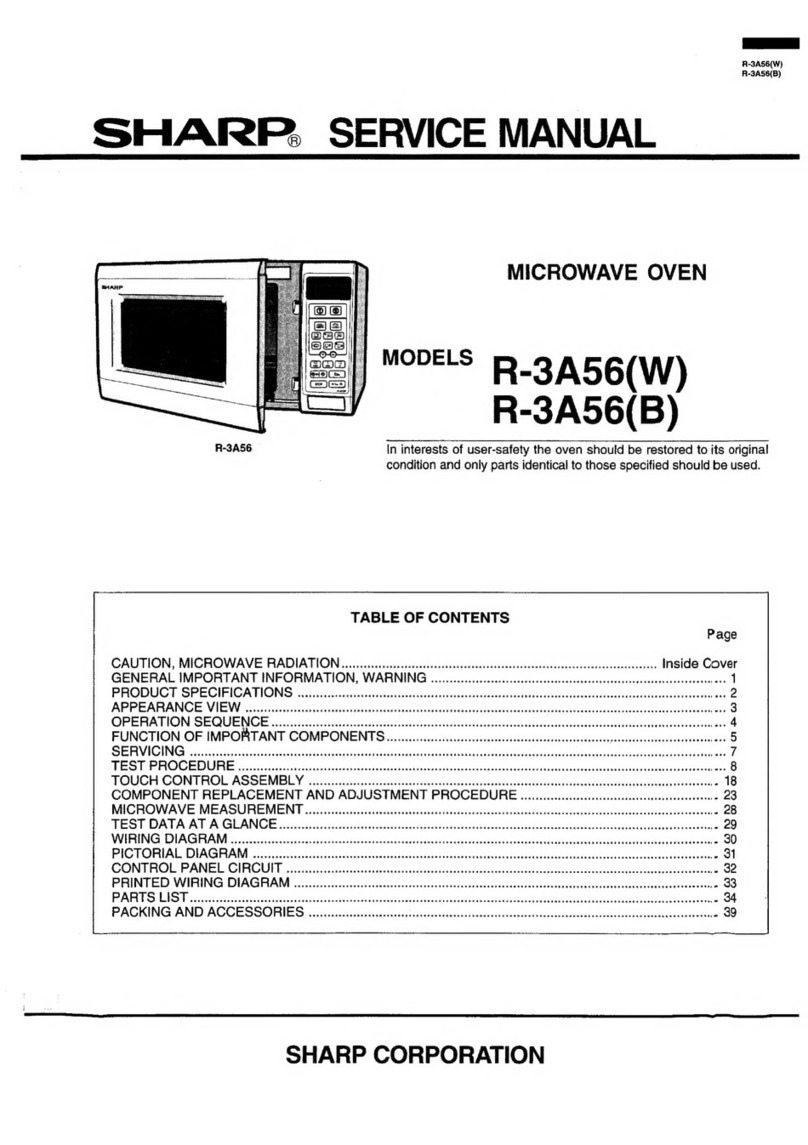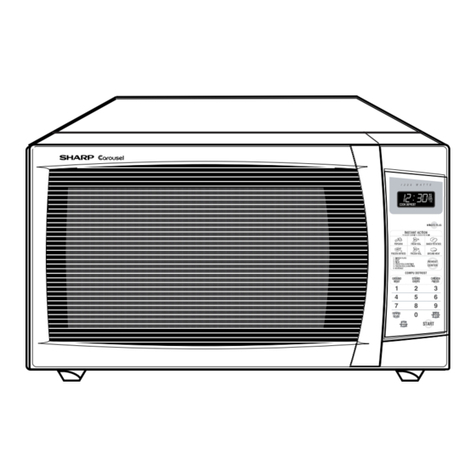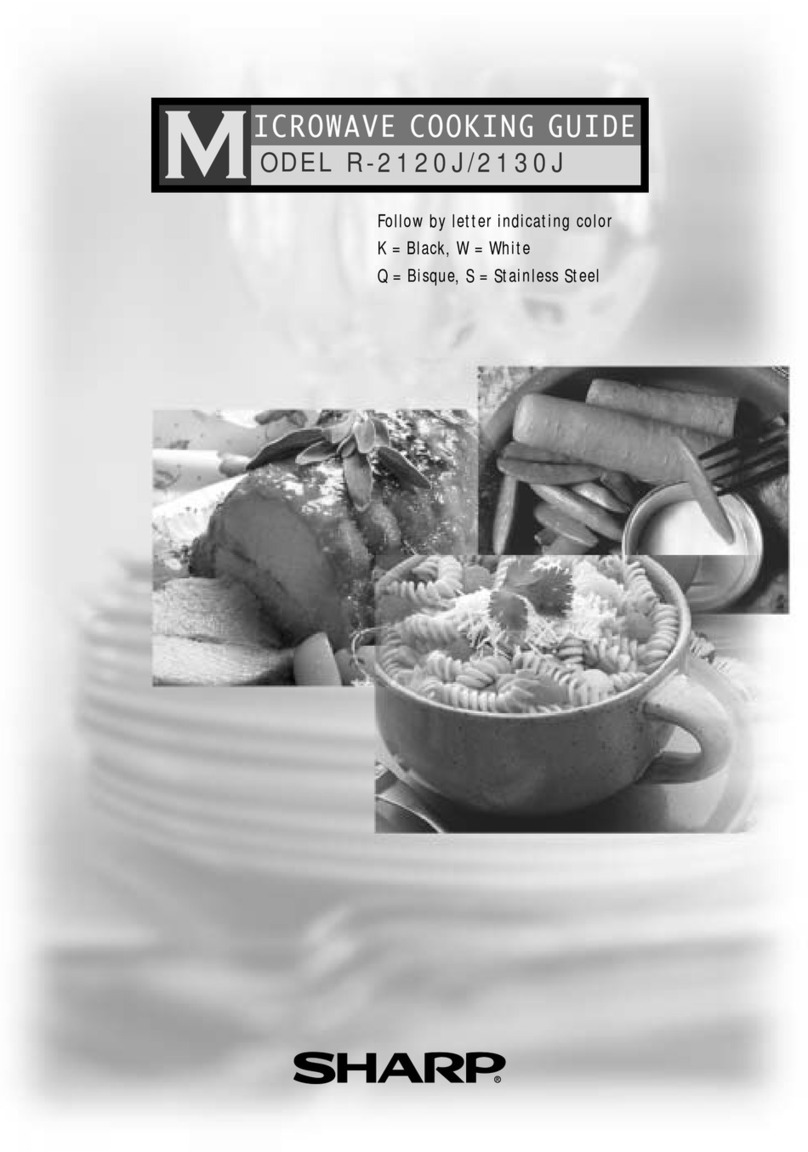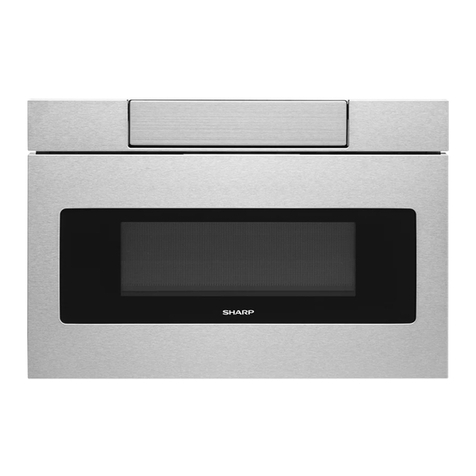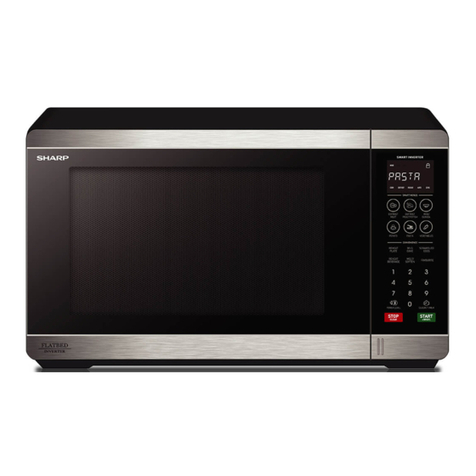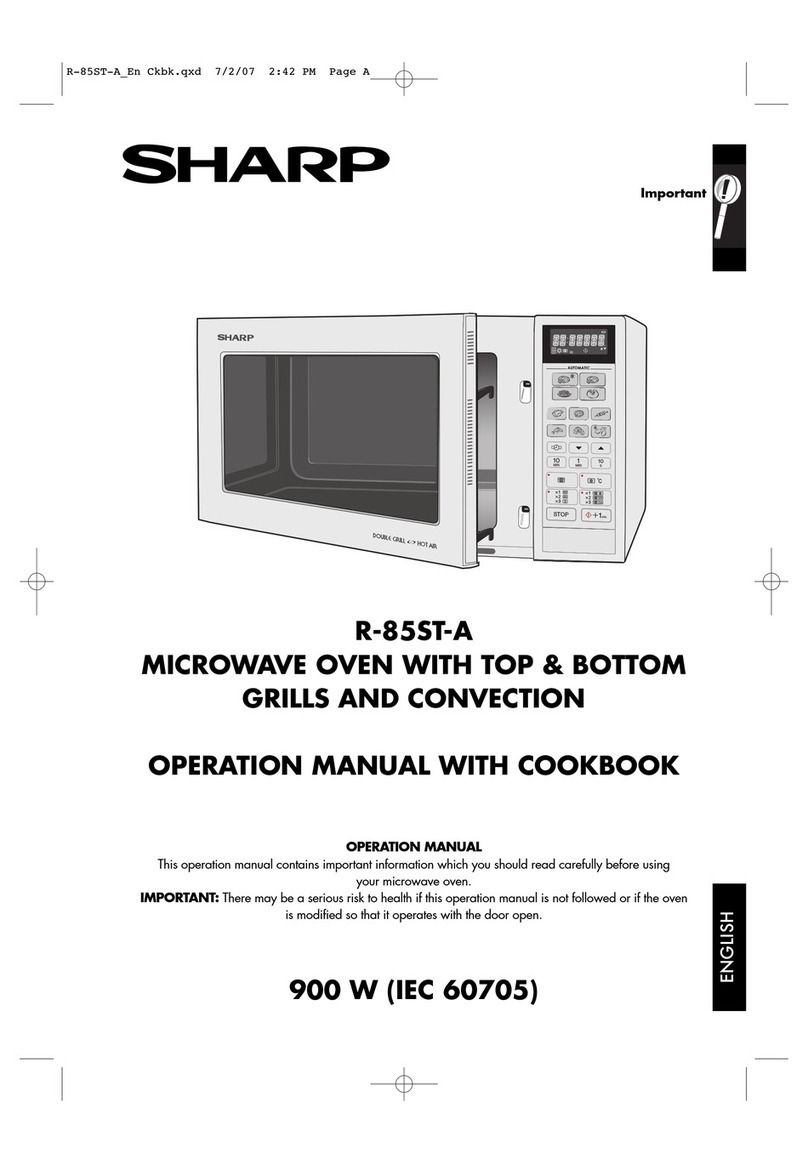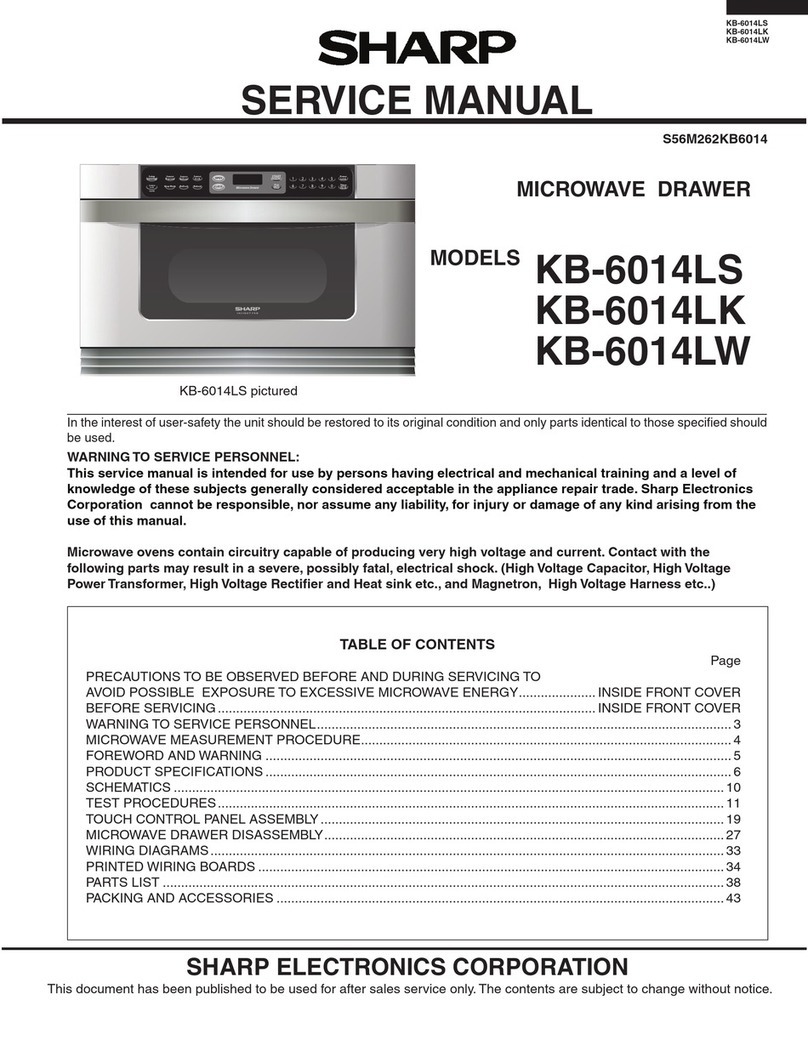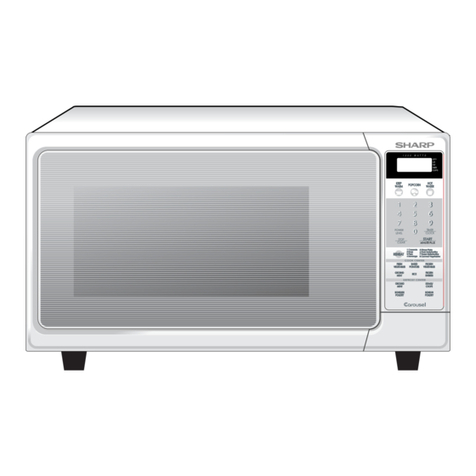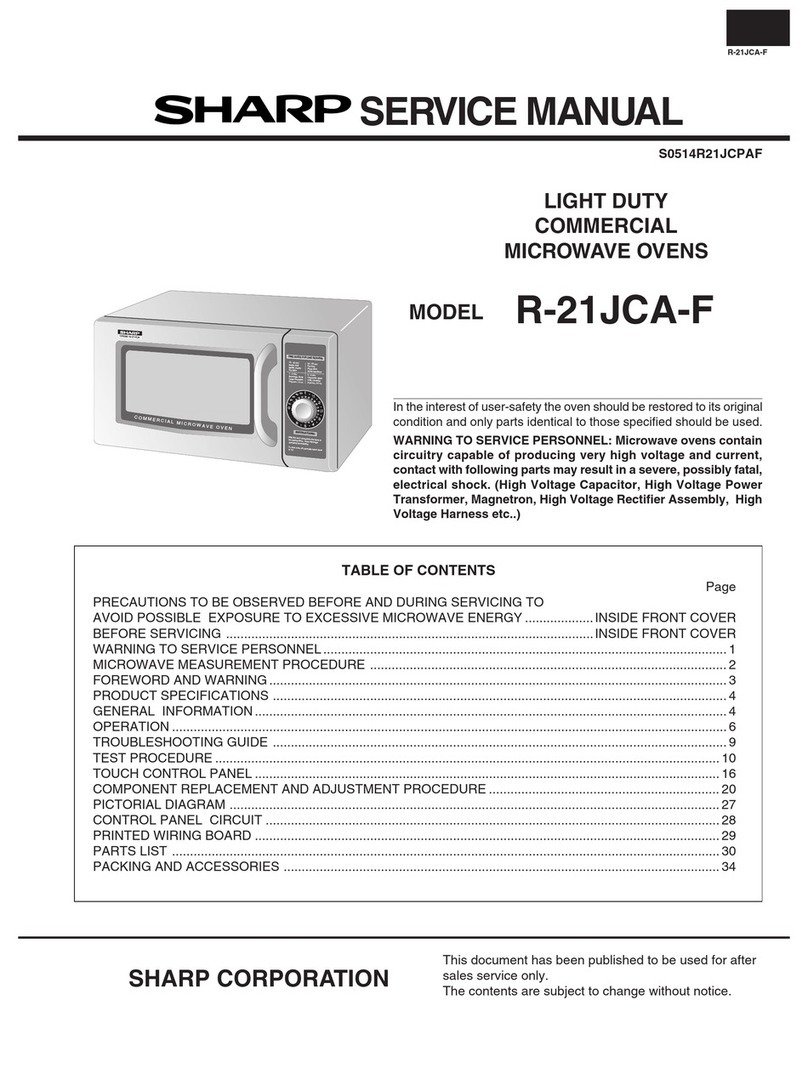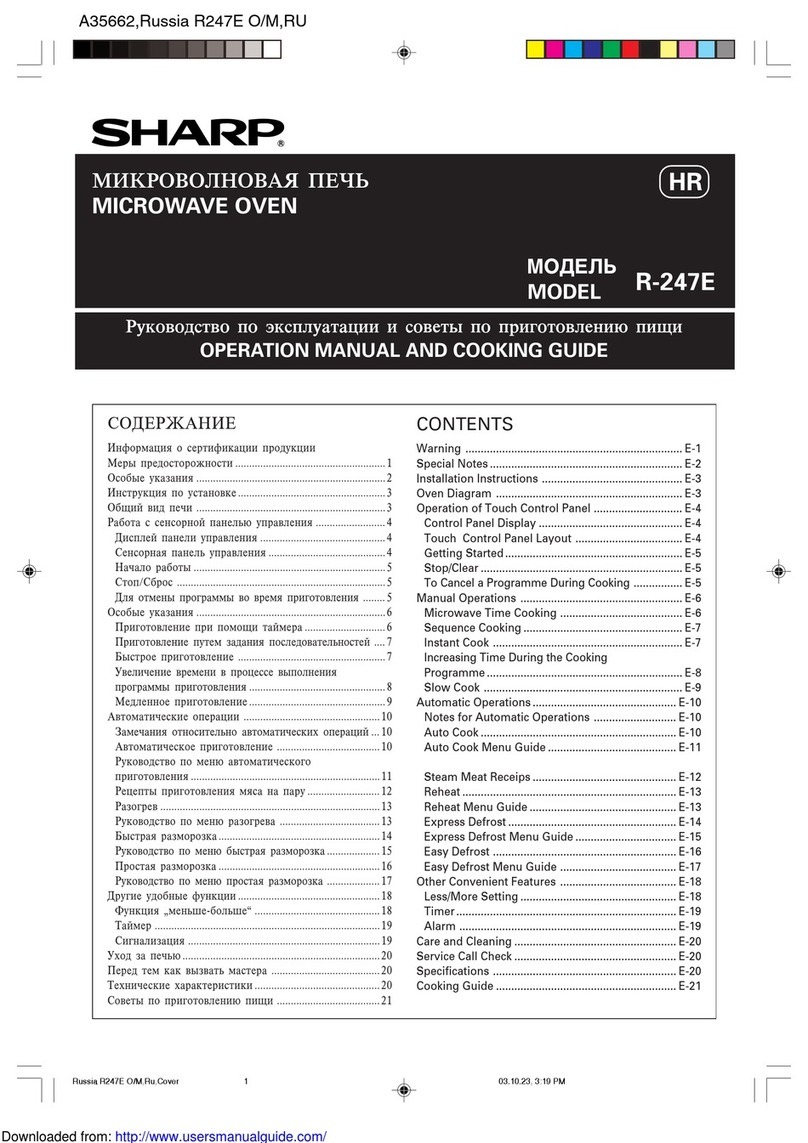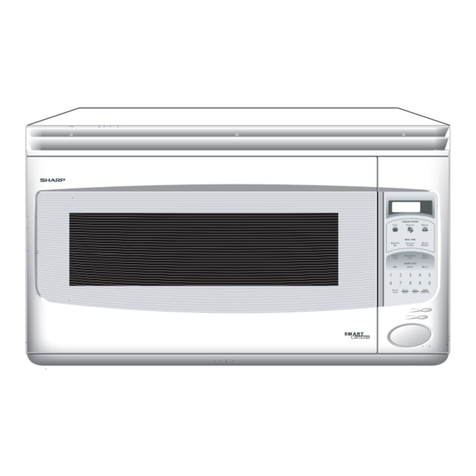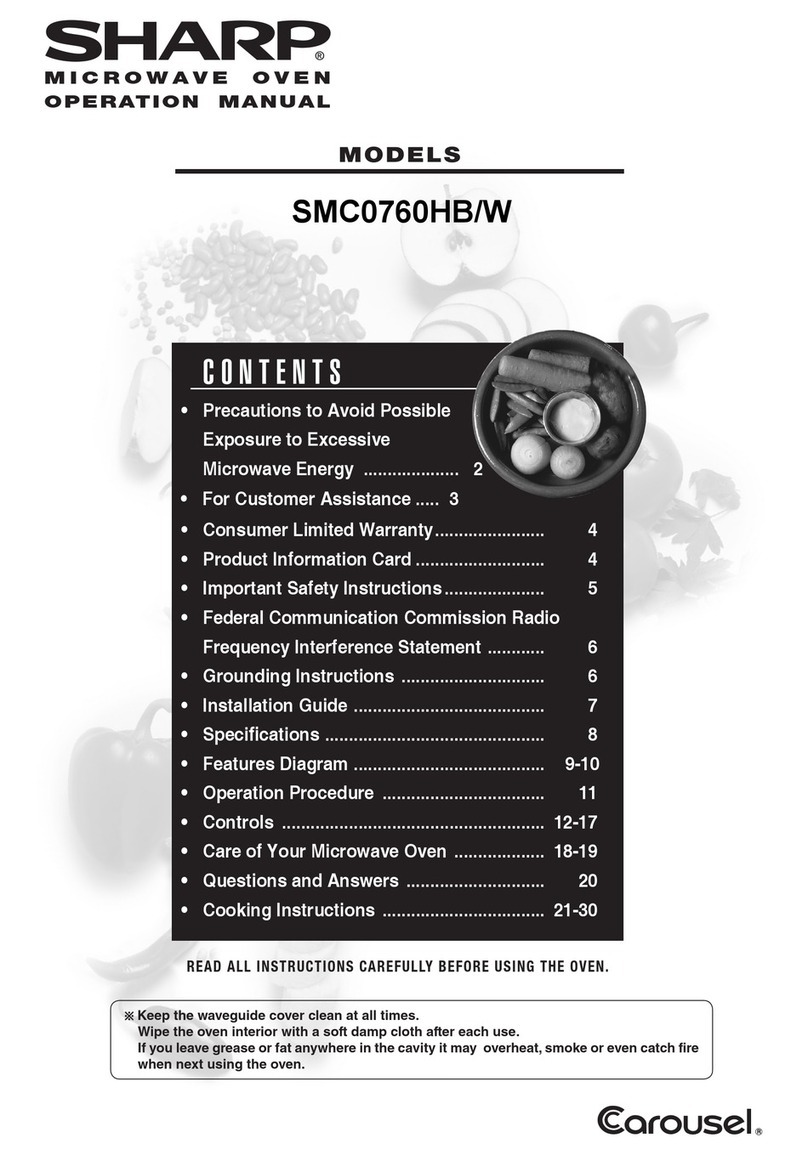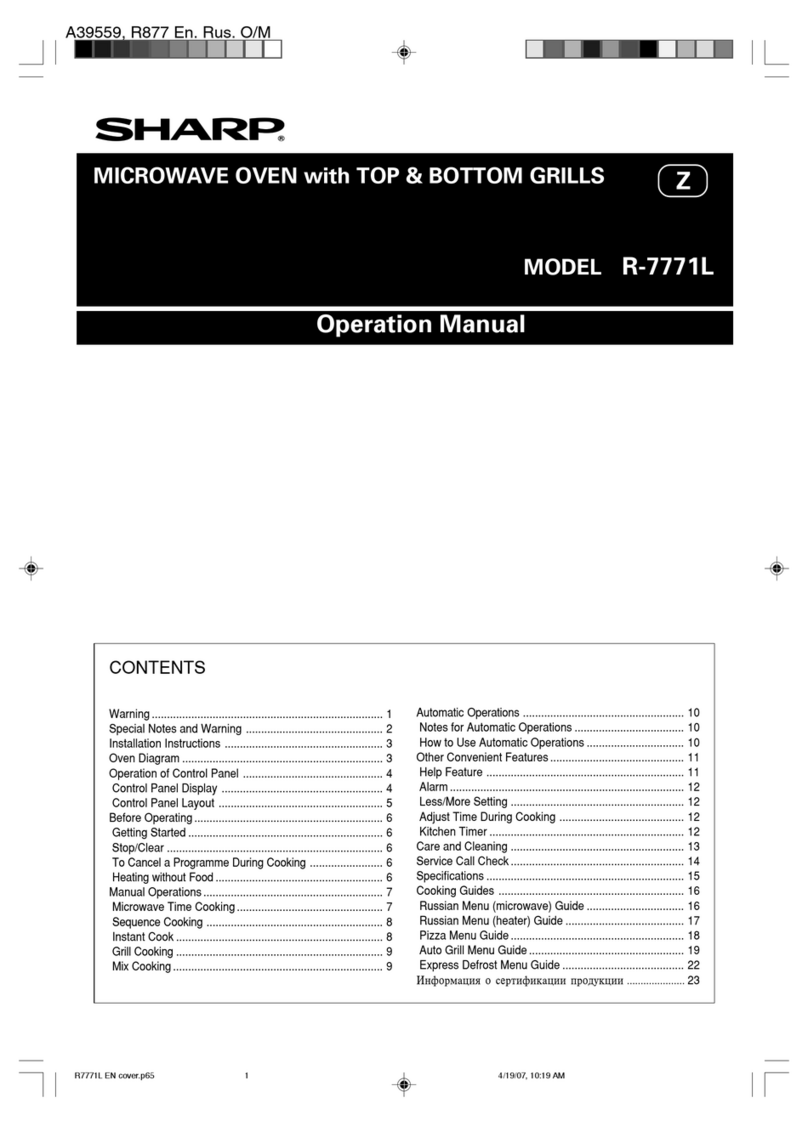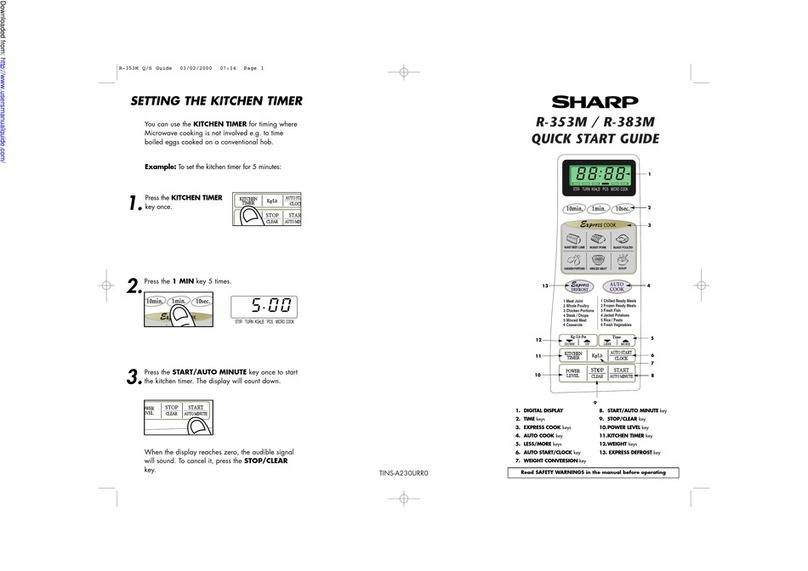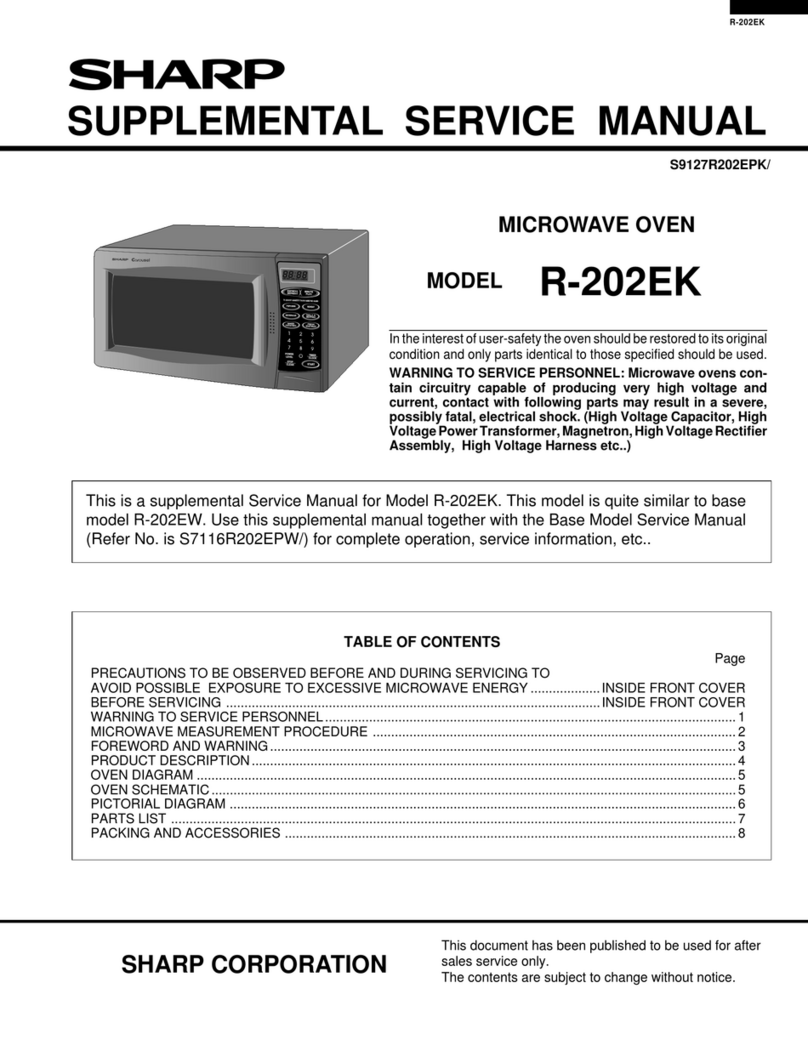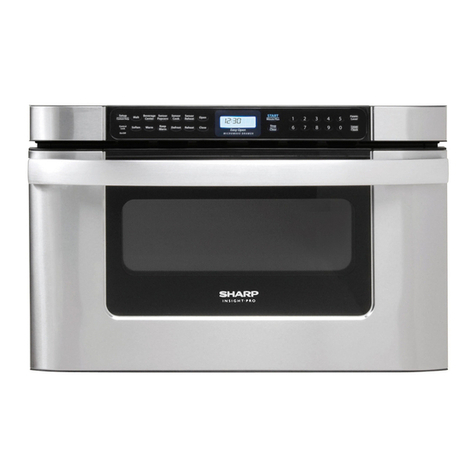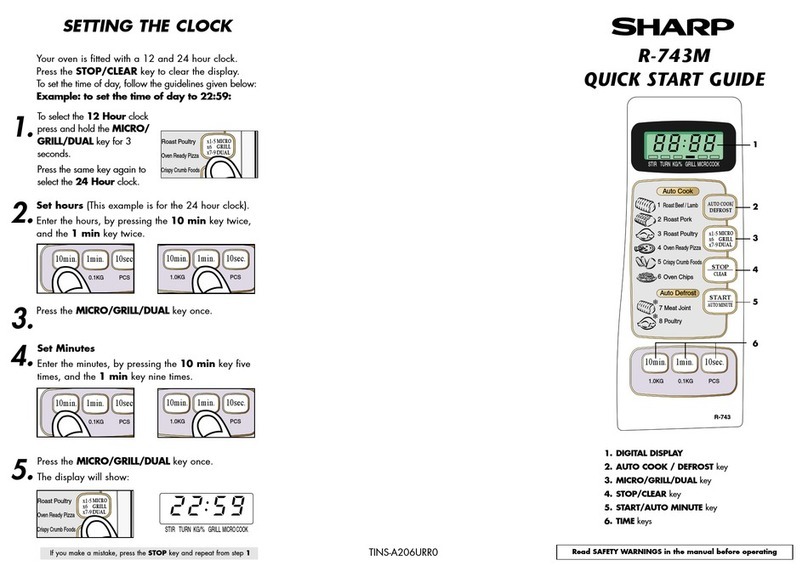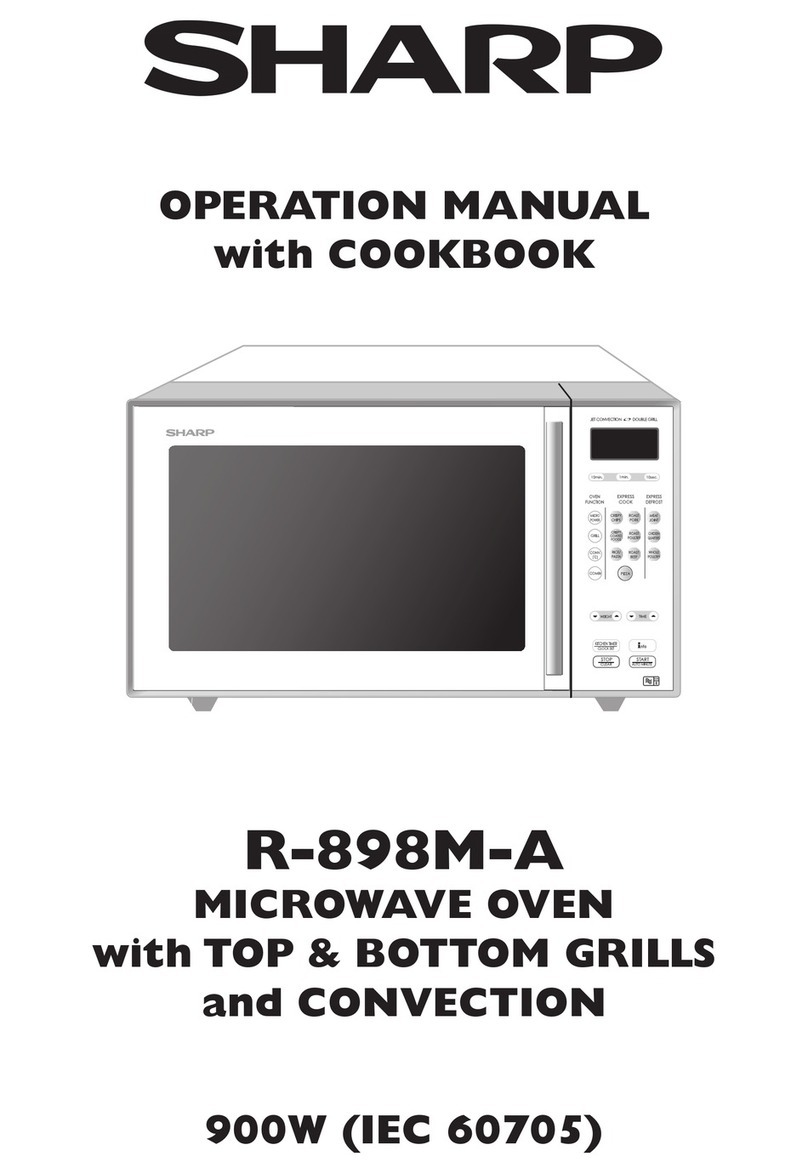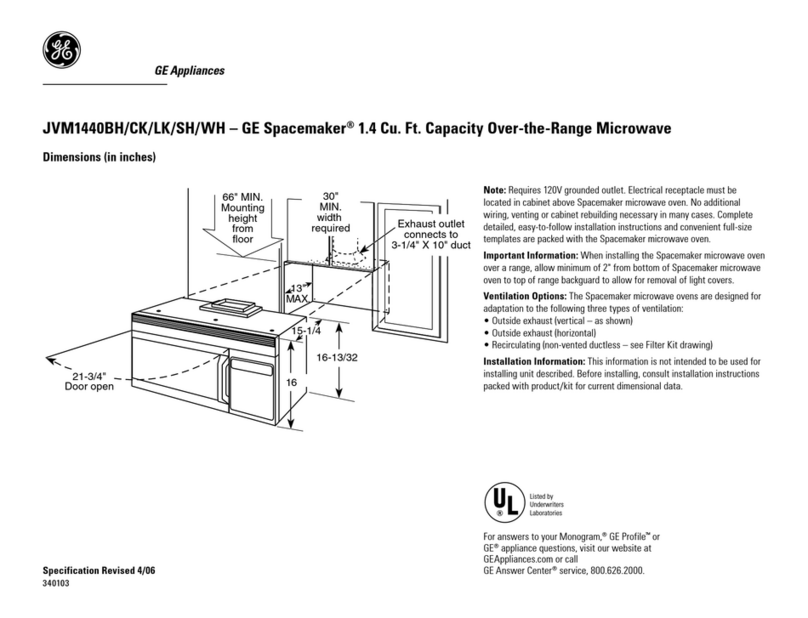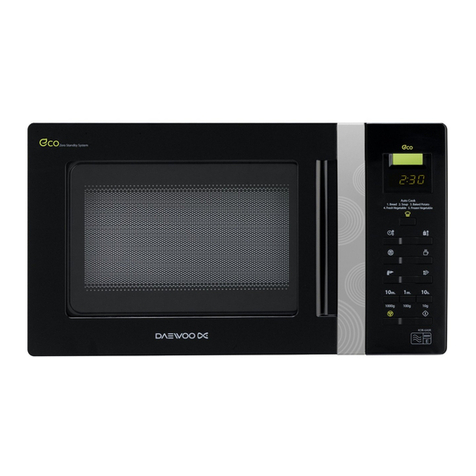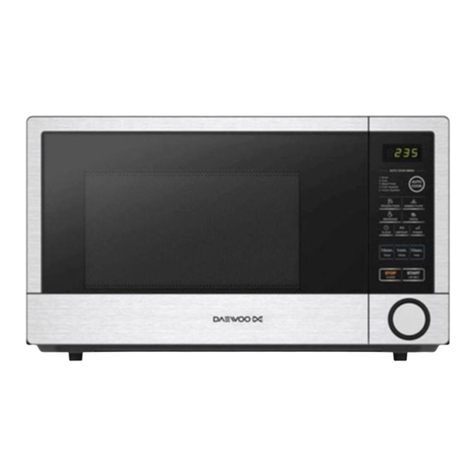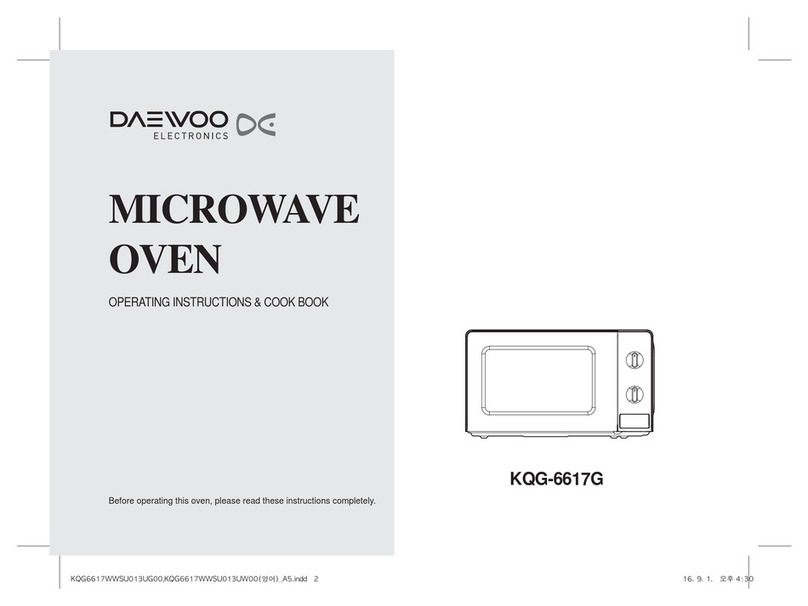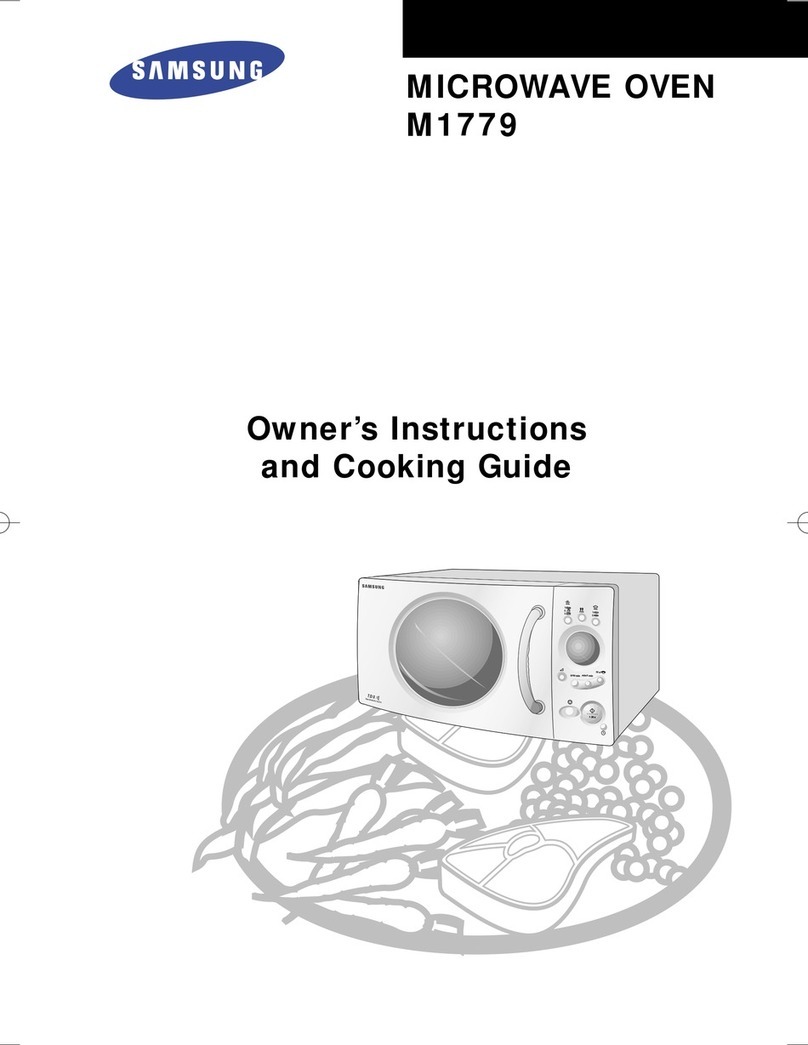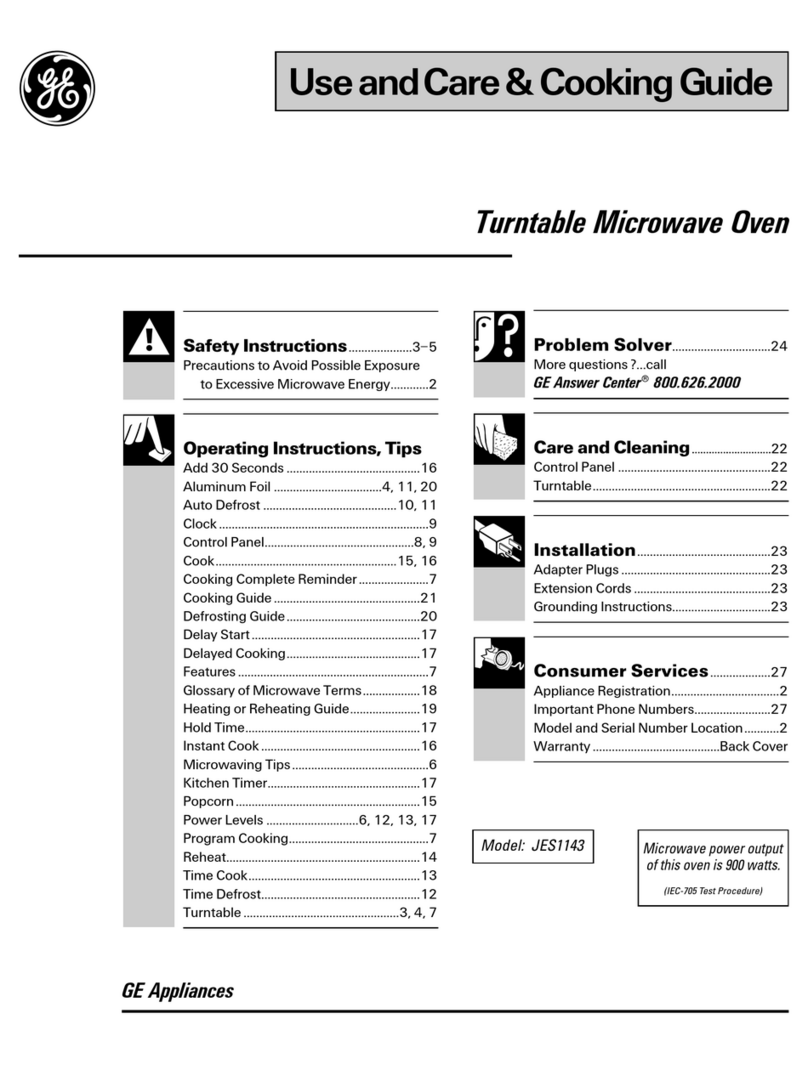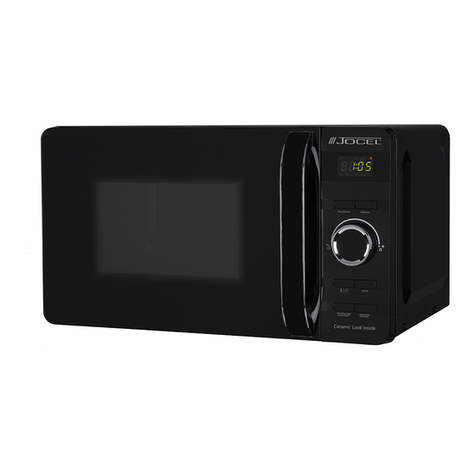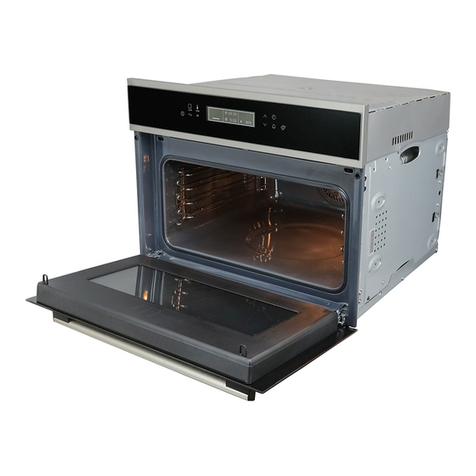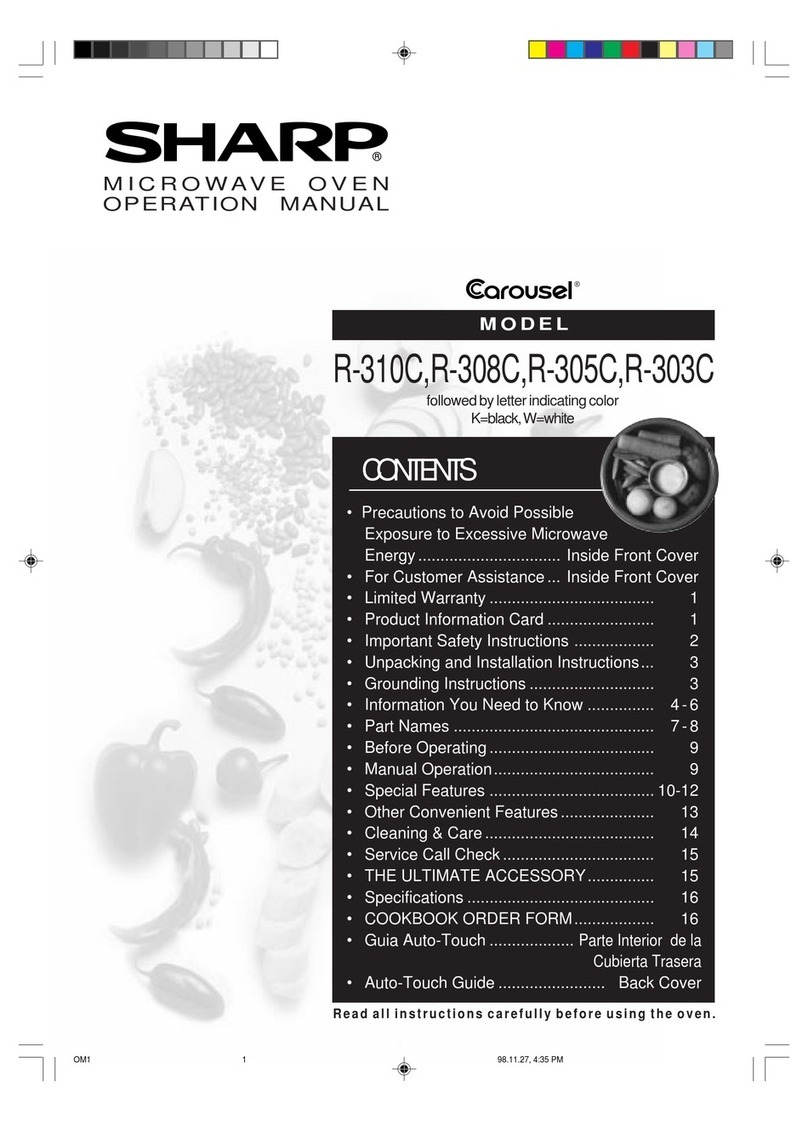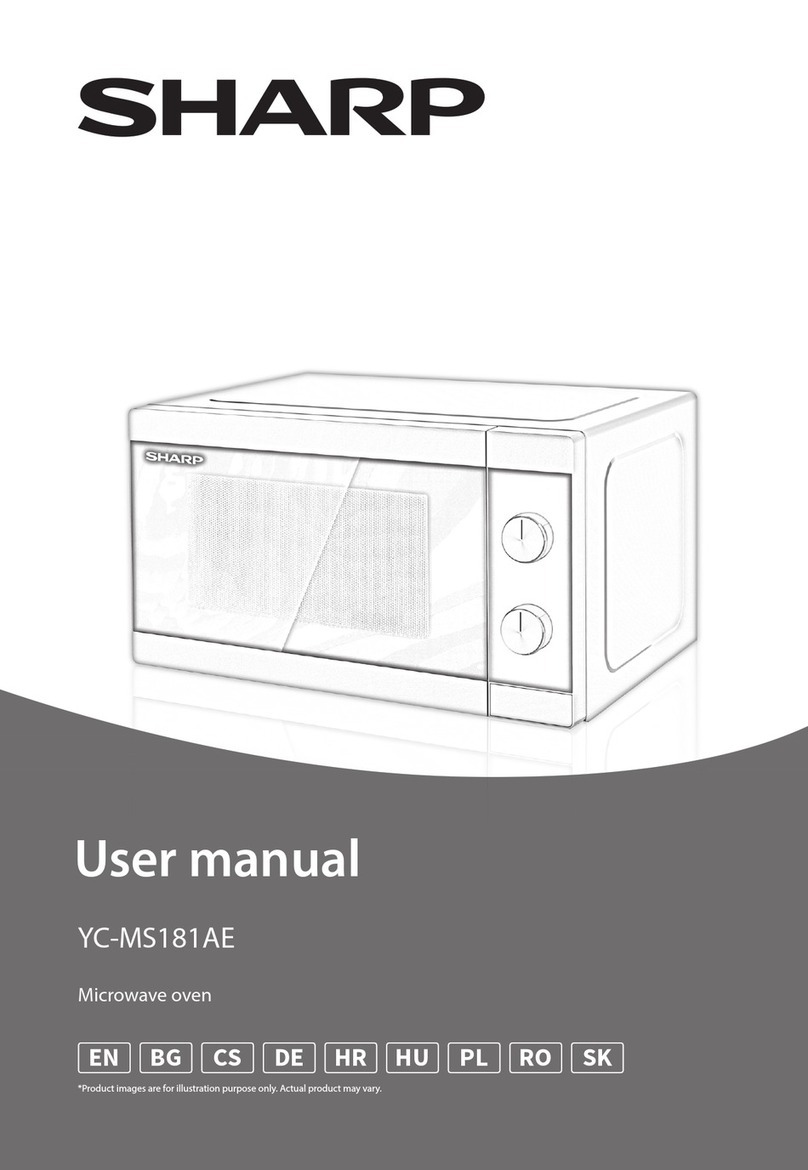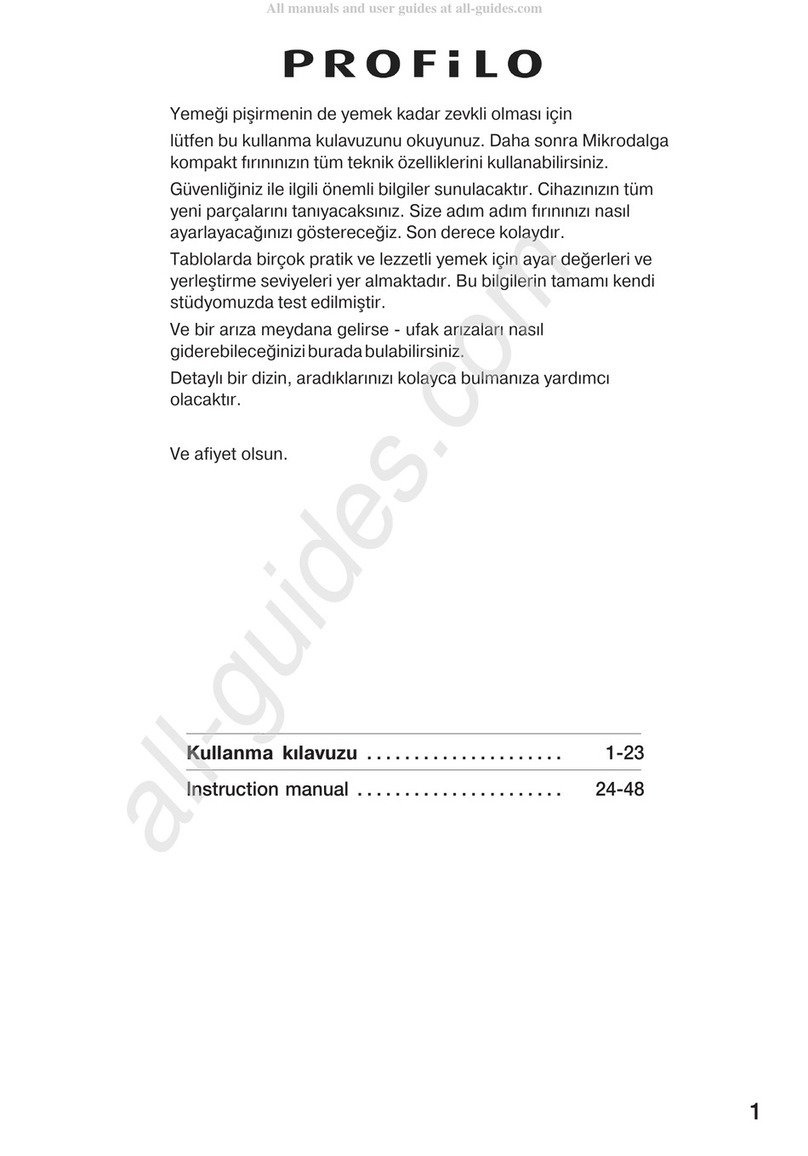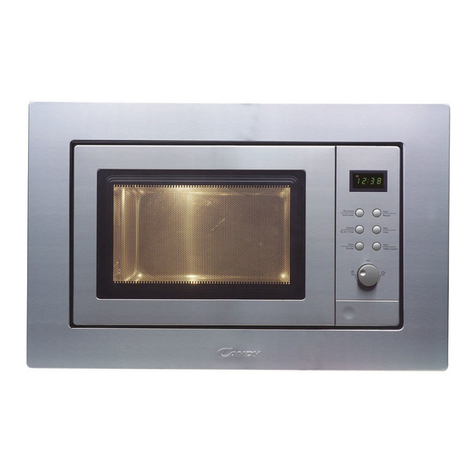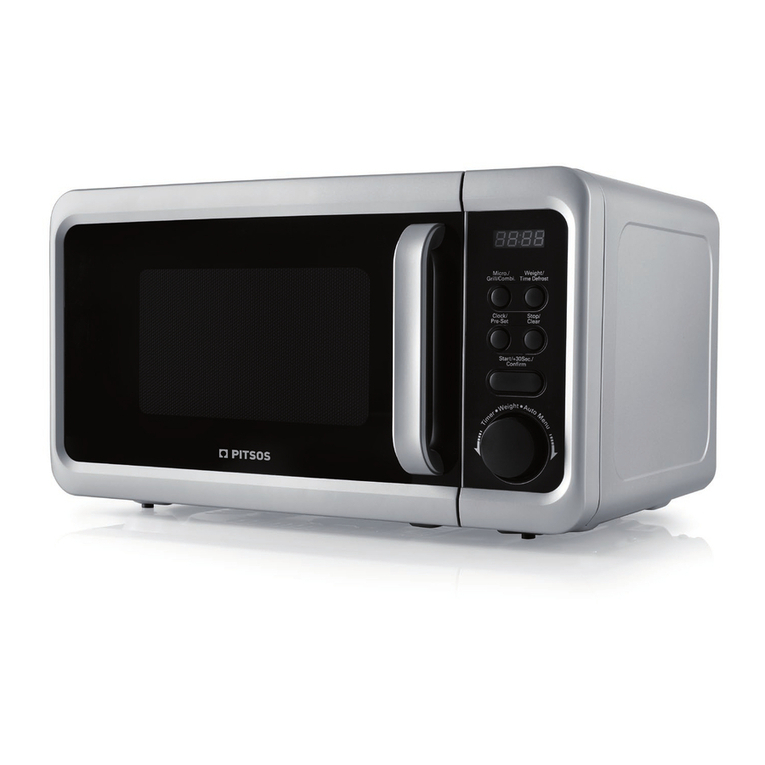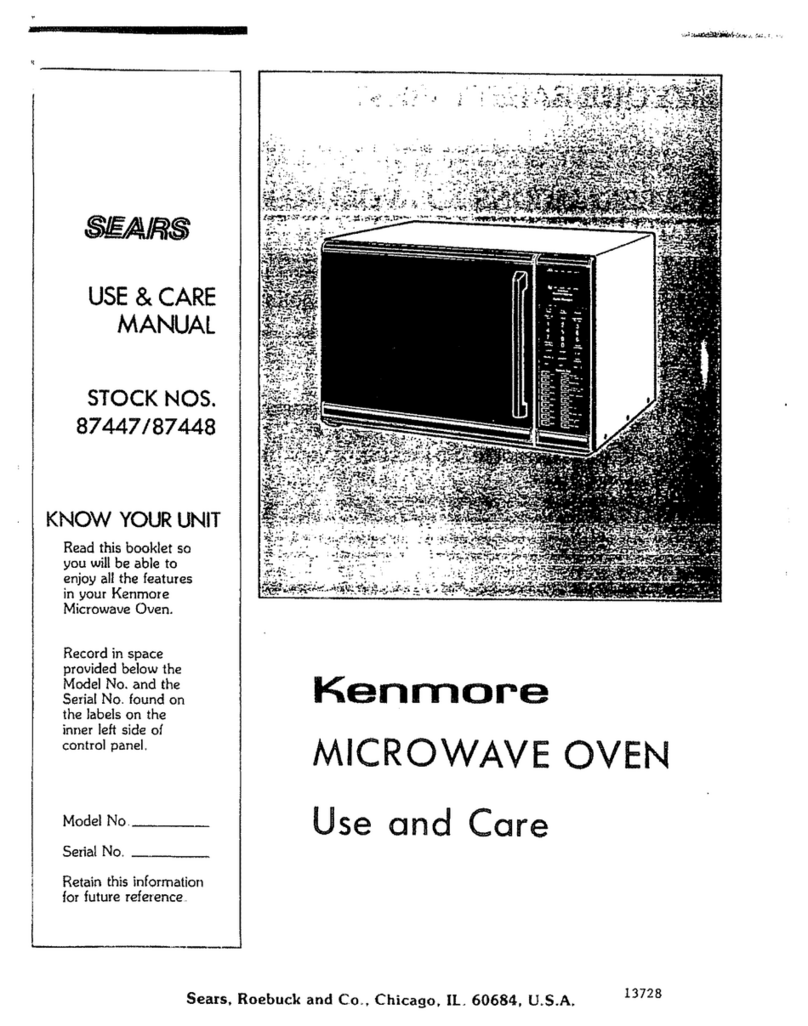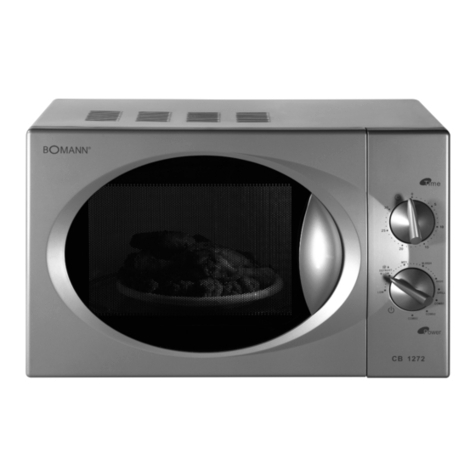
4
R-2197
OPERATION SEQUENCE
OFF CONDITION
Closing the door activates the 1st. latch switch, 2nd. latch
switch and stop switch.
IMPORTANT:
When the oven door is closed, the contacts COM-NC
of the monitor switch must be open. When the mi-
crowave oven is plugged in a wall outlet (230 - 240V
50Hz), the line voltage is supplied to the noise filter
and the control unit.
Figure O-1 on page 28
1. The oven display will show . .
MICROWAVE COOKING CONDITION
ProgramdesiredcookingtimebytouchingSELECTTIME
pad and the NUMBER pads. When the START pad is
touched, the following operations occur:
Figure O-2 on page 28
RELAY CONNECTED COMPONENTS
RY-2 power transformer
RY-3 oven lamp/antenna motor/fan motor
1. The line voltage is supplied to the primary winding of
thehighvoltagetransformer. The voltageisconverted
to about 3.3 volts A.C. output on the filament winding
and high voltage of approximately 2300 volts A.C. on
the secondary winding.
2. The filament winding voltage (3.3 volts) heats the
magnetronfilamentandthehighvoltage(2000volts)is
senttothevoltagedoubling circuit, where it isdoubled
to negative voltage of approximately 4000 volts D.C..
3. The 2450 MHz microwave energy produced in the
magnetron generates a wave length of 12.24 cm. This
energyischannelledthroughthewaveguide(transport
channel)intothe oven cavity,wherethe food isplaced
to be cooked.
4. Whenthecookingtimeisup,asignaltoneisheardand
the relays RY2 + RY3 go back to their home position.
Thecircuitstotheovenlamp,highvoltagetransformer,
fan motor and antenna motor are cut off.
5. Whentheoven door isopenedduring a cookingcycle,
the switches come to the following condition.
Switch Contact Condition
During Oven Door
Cooking Open(No cooking)
1st. latch switch COM-NO Closed Opened
2nd.
latch switch COM-NO Closed Opened
Stop
switch COM-NO Closed Opened
Monitor Switch COM-NC Opened Closed
Thecircuittothehighvoltagetransformer,fanmotor,oven
lamp and antennamotor are cut off when the 1st. latch
switch, 2nd. latch switch and stop switch are made open.
Shown in the display is remaining time.
6. MONITOR SWITCH CIRCUIT
The monitor switch is mechanically controlled by the
oven door, and monitors the operation of the 1st. latch
switch, the 2nd. latch switch and the relay RY2.
6-1. When the oven door is opened during or after the
cycleofacookingprogram, the 1st. latch switch2nd.
latchswitch andstopswitchmustopentheircontacts
first. After that the contacts (COM-NC) of the monitor
switch can be closed.
6-2. When the oven door is closed, the contacts (COM-
NC) of the monitor switch must be opened. After that
thecontactsofthe1st. latch switch, 2nd.latchswitch
and stop switch are closed.
6-3. Whentheovendoorisopenedandthecontactsofthe
1st. latch switch, 2nd. latch switch and the relay RY2
remain closed, the fuse M10A will blow, because the
monitorswitchisclosed andashortcircuitiscaused.
POWER LEVEL P-0 TO P-90 COOKING
When Variable Cooking Power is programmed, the line
voltageissupplied tothepower transformer intermittently
through the contacts of relay (RY-2) which is operated by
the control unit within a 32 second time base. Microwave
power operation is as follows:
VARI-MODE ON TIME OFF TIME
Power 10(P-HI) 32 sec. 0 sec.
(100% power)
Power 9(P-90) 30 sec. 2 sec.
(approx. 90% power)
Power 8(P-80) 26 sec. 6 sec.
(approx. 80% power)
Power 7(P-70) 24 sec. 8 sec.
(approx. 70% power)
Power 6(P-60) 22 sec. 10 sec.
(approx. 60% power)
Power 5(P-50) 18 sec. 14 sec.
(approx. 50% power)
Power 4(P-40) 16 sec. 16 sec.
(approx. 40% power)
Power 3(P-30) 12 sec. 20 sec.
(approx. 30% power)
Power 2(P-20) 8 sec. 24 sec.
(approx. 20% power)
Power 1(P-10) 6 sec. 26 sec.
(approx. 10% power)
Power 0(P-0) 0 sec. 32 sec.
(0% power)
Note: The ON/OFF time ratio does not correspond with
the percentage of microwave power, because
approx. 2 seconds are needed for heating of the
magnetron filament.
